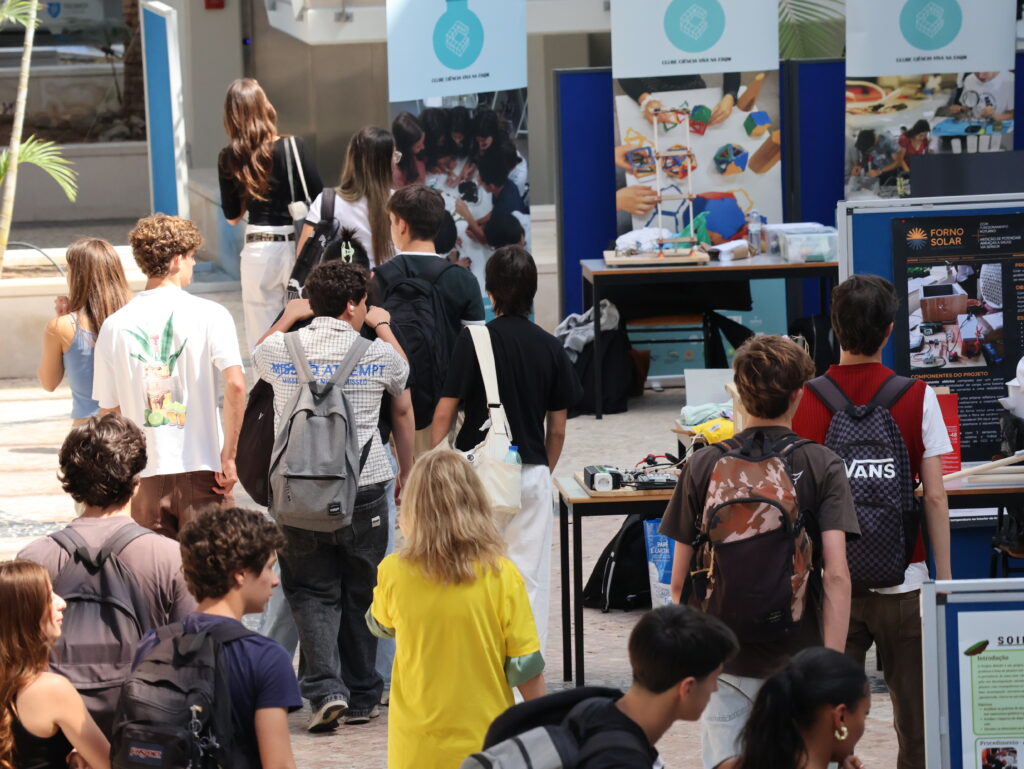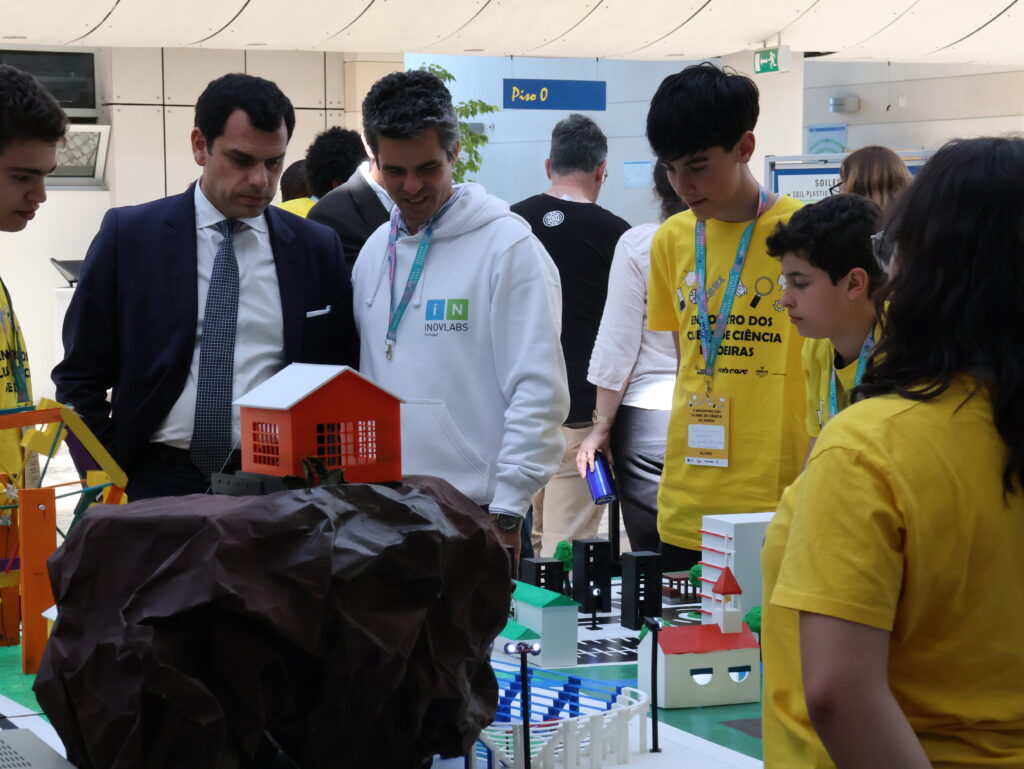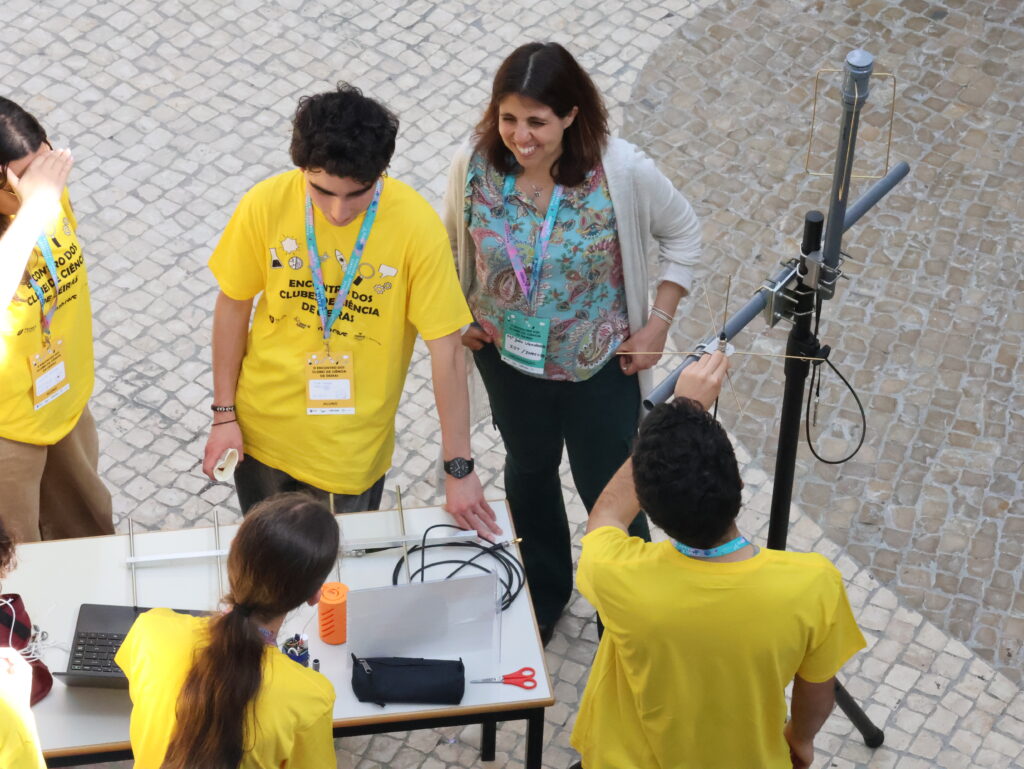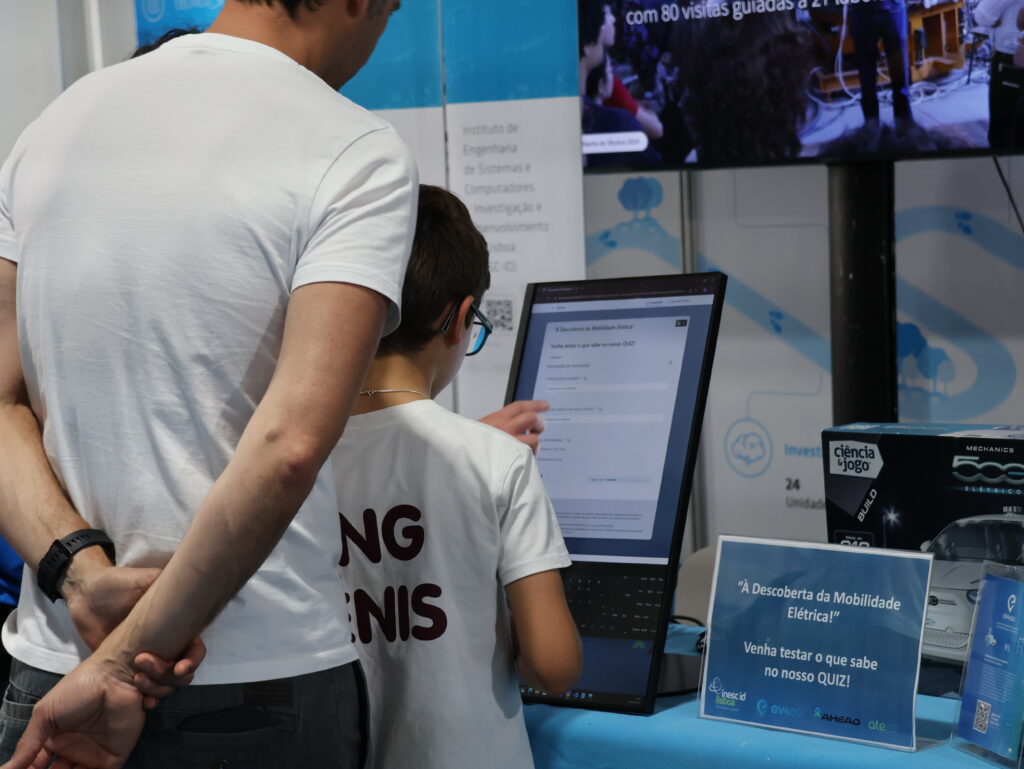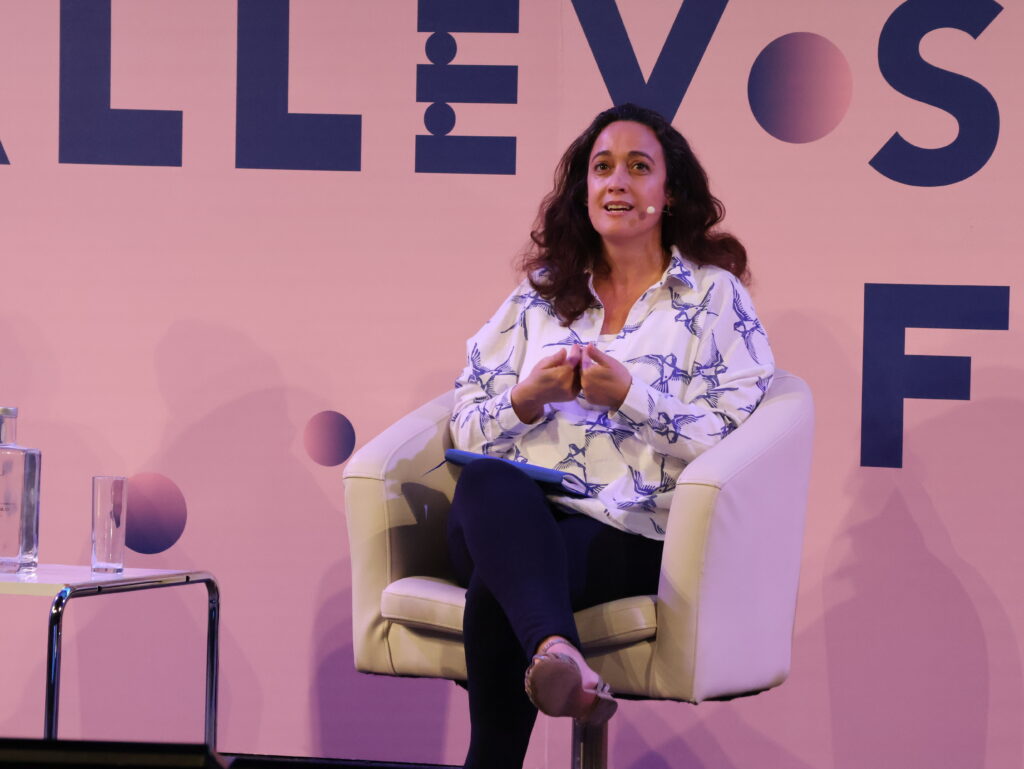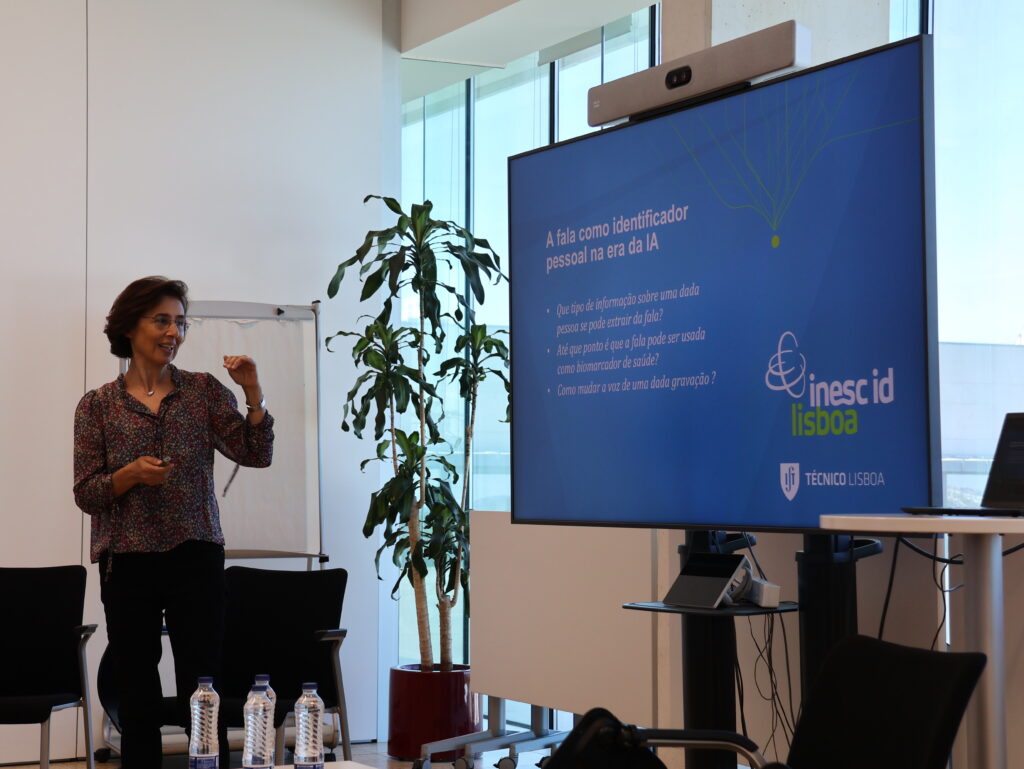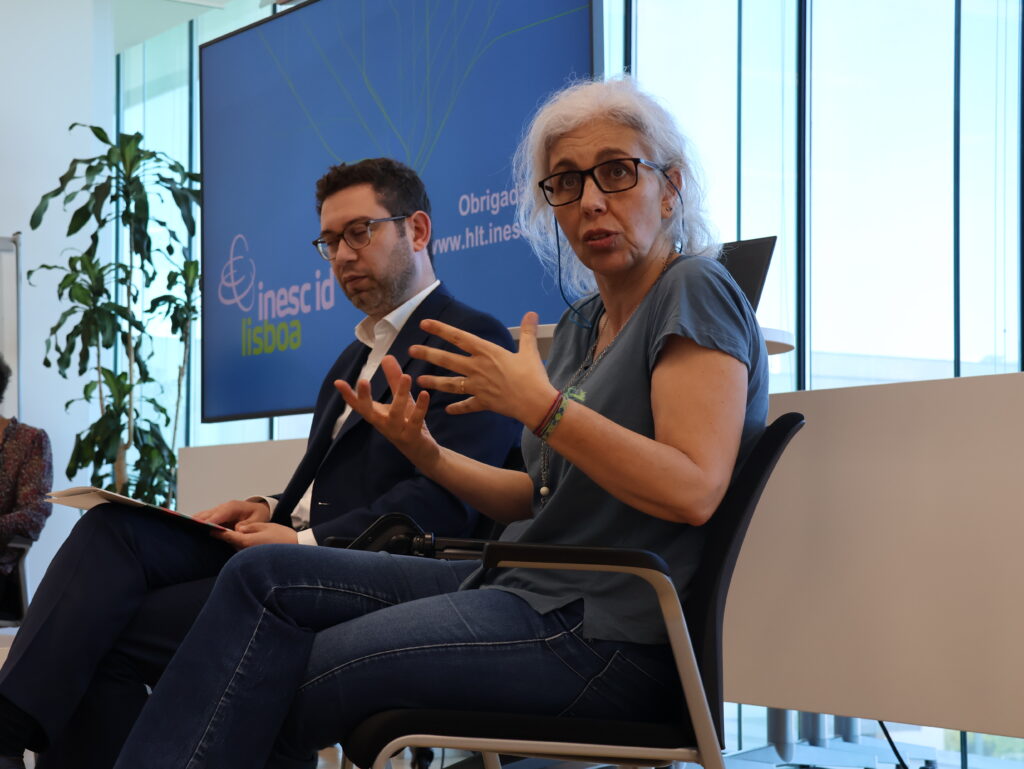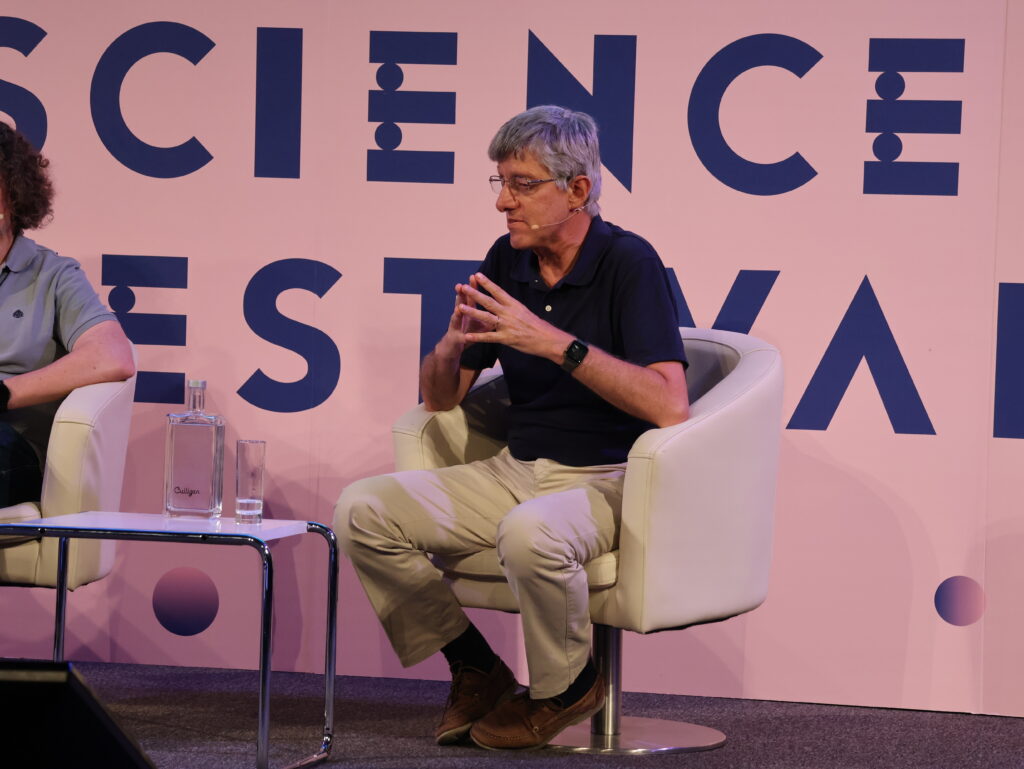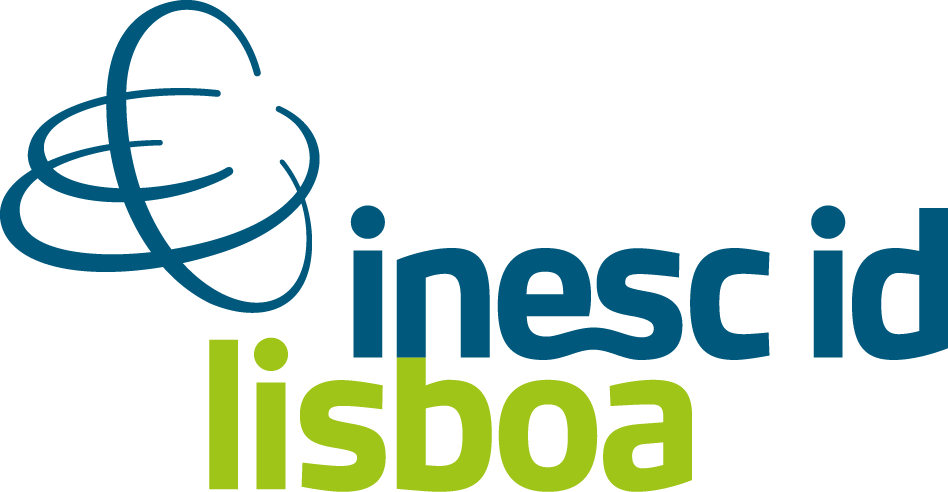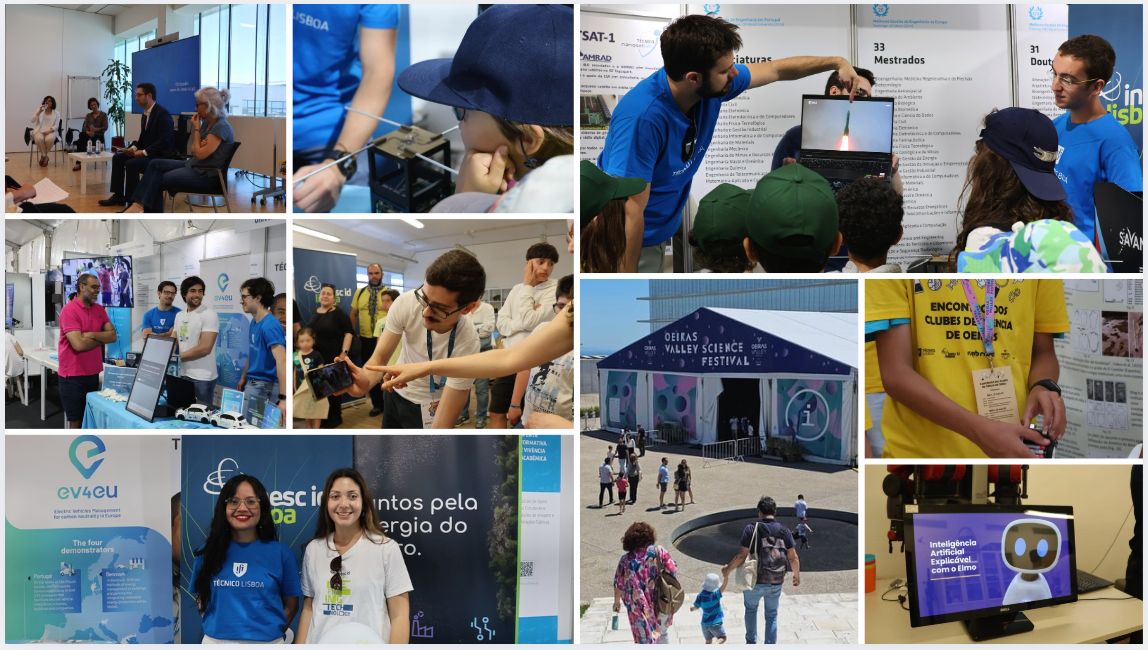
“Will it fly if I light a match?” — INESC-ID at the Oeiras Science Festival
“If I light a match, will it fly too?” Eliane is “seven and a half” years old and has a curious mind that shines through in her sharp questions and wide-eyed wonder. Her inquiry came after Diogo Diniz, a third-year undergraduate student in Computer Science and a volunteer at Técnico’s booth (where INESC-ID was also present), explained how rockets ascend thanks to the downward force of fire—demonstrating this with a video of a rocket launch.
But this wasn’t just any rocket. It was the one that lifted off from the Guiana Space Centre, carrying onboard ISTSat, the first Portuguese university-built satellite, developed under NanoSat Lab (a consortium gathering IST, IT, INOV and other research institutes, with INESC-ID as the leader).
Eliane wasn’t entirely convinced. With a slightly skeptical look, she added: “I’m going to build a machine that goes down, with matches pointing up.”
Without knowing it, Eliane was perfectly embodying the motto of the Oeiras Science Festival: Discover, Question, Imagine. Organized by the Municipality of Oeiras and co-hosted by Taguspark, this science celebration ran from May 21 to 25 and brought together schools, researchers, and families to engage in hands-on science, interactive demos, and open-ended exploration.
As expected, INESC-ID was present with contributions in both formats: exhibition stands with demos and multiple talks across the event’s five-day agenda. In parallel, on May 24, the festival also hosted the Técnico Oeiras Campus Open Day.
While Diogo Diniz was making his outreach debut, Pedro Amado—currently a master’s student supervised by INESC-ID researcher, Gonçalo Tavares—was already a seasoned participant in public engagement. “I really enjoy talking with kids,” he shared. “There’s a lack of natural vocation in students, and coming to Técnico without a sense of purpose requires extra effort,” he reflected.
Rockets, robots, and electric cars
João Paulo Monteiro, from the ISTSat project team, is also no stranger to this kind of event, especially after the satellite’s successful launch in July 2024. Between answering questions, he received a real-time alert on the project’s satellite tracking platform: something had passed within 400 meters of ISTSat. “Probably Starlink,” he guessed. “It happens all the time.” And he was right.
Explaining to a group of 7th graders from Agrupamento de Escolas Aquilino Ribeiro, in Porto Salvo, Oeiras, Pedro Amado described the new space landscape: “Today’s satellites are much smaller and can be launched by private companies.”
At the same stand, the project EV4EU – Exploring Electric Mobility raised awareness about the ongoing energy transition. Visitors could test their knowledge through a quiz designed by INESC-ID researcher Marcelo Braço Forte, with the chance to win a miniature electric car. In total, 114 participants tried their luck.
The Mushroom Game, developed by GAIPS, focused more on knowledge than chance. Alongside its AI companion, ELMO the Robot, the game tested how much visitors trusted artificial intelligence systems while teaching them how to identify safe and poisonous mushrooms. Students from 6th and 7th grade proved to be keen technophiles, answering nearly all of Miguel Belbote’s questions correctly. Belbote, a researcher at GAIPS, already an experienced outreach participant, enjoyed the enthusiastic responses.
“Guess how much this robot dog weighs,” he asked, pointing to the GO2 Robot Dog. “Twelve kilos?” ventured one of the seven boys in the group. “Fifteen,” he replied. Not a bad guess.
But in the end, this isn’t about getting all the answers right. What matters most is wanting to know.
And in that respect, every single student—Eliane included—passed with flying colors.
Oeiras Valley Science Festival was also an opportunity to celebrate the cooperation between students, teachers, and researchers, who came together for two afternoons, on the 2nd Meeting of the Oeiras Science Clubs. Co-organised by Técnico Oeiras and ITQB NOVA with the support of the Engenharia para Todos project (INESC-ID and Oeiras Municipality), it was a moment of exchange that featured presentations, a science fair, a roundtable discussion, and a poster exhibition showcasing the “Mentorias” project, in which scientists work closely with students.
What about us? Culture, language and sovereignty in the Age of AI
The final day of the festival saw four INESC-ID researchers actively participating in three roundtable sessions focused on the promises and challenges of Artificial Intelligence.
Early in the morning, Helena Moniz joined the session “Artificial Intelligence and Us”, where she and fellow speakers Paulo Novais (University of Minho), Pedro Bizarro (Feedzai), and Mário Figueiredo (IST) reflected on the growing role of AI in our lives and in shaping the decisions that will define our future. Helena emphasised the importance of being aware of the cultural and ideological biases often embedded in these models, highlighting the need to represent cultural diversity and the many ways of living and thinking found across societies.
Shortly after, Isabel Trancoso and Luísa Coheur took part in the session “Artificial Intelligence in Written and Spoken Language: Applications in Health, Education and Industry”. Isabel explored the human voice as an identity marker in the digital age, while Luísa brought attention to the challenges AI presents in the educational context. The session was moderated by André Peralta (NOVA) and also featured Liliana Ferreira (Fraunhofer Portugal), who added a complementary perspective to the panel’s reflections.
In the afternoon, Arlindo Oliveira took the stage for one of the festival’s final sessions — “Generative AI and European Sovereignty in AI”. Alongside André Martins (IST) and Paulo Dimas (Center for Responsible AI), Arlindo explored the rapid rise of large language models (LLMs), their technological impact, and the far-reaching challenges they pose — not only at the economic, political, and social levels, but also in terms of strategic autonomy. It was a conversation that brought the pressing theme of innovation and sovereignty to the table with critical insight and a sense of urgency – giving voice to the central message of the festival.
Images | © 2025 INESC-ID
